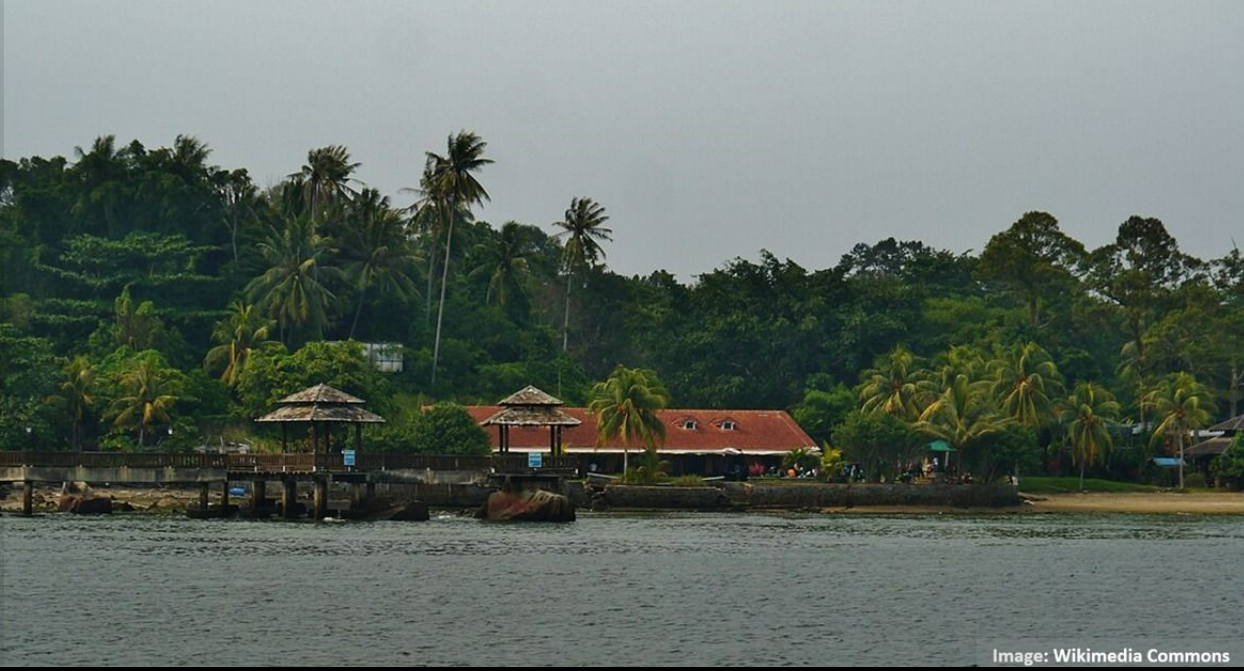Pulau ubin

Located just off the north-east coast of Singapore, Pulau Ubin is one
of Singapore’s last remaining villages or kampongs.
#DidYouKnow Pulau
Ubin was formerly a granite quarrying hub with close to 4,000 villagers
in the 1970s before its transition into a popular getaway destination today.
Pulau Ubin’s original name in Malay, Pulau Batu Jubin, means “Granite Stone
Island”, as granite from the island was used to make floor tiles or jubin
in Malay. The island's name derived from a shortened form of jubin to Ubin.
Today, the granite quarries are inactive and have since become scenic
viewpoints. There have been many efforts to conserve Pulau Ubin’s rich
natural and cultural heritage.
This rustic island offers a glimpse into Singapore's past with its traditional
kampong houses, old-school coffee shops, and tranquil village vibes. Examples
of sites of heritage value found on the island include: (1) the former
Bin Kiang School (敏江学校, 1952-1985), (2) former Maternity and Child Health
Clinic (established in 1957-1987), (3) former Pulau Ubin Community Centre
(1961-2003), and (4) former Kampung Melayu Malay School (1956-late 1970s).
With its small size of approximately 10 sqkm, you can easily get around
Pulau Ubin via taxi, cycling or walking. The abundance of bicycle shops
on Pulau Ubin makes cycling one of the more popular ways of getting to
the most scenic spots on the island. Spot some wildlife and enjoy the tranquillity
of the island as you keep an eye out for hornbills, wild boars, and monkeys.
Just remember to observe them from a safe distance!
Feeling adventurous? Take a hike up Puaka Hill, the highest point on the
island, and be rewarded with breathtaking panoramic views of the surrounding
sea and lush greenery.
You can also book a kayaking tour and let the experienced guide take you
kayaking amongst the mangroves in Pulau Ubin. Apart from the mangroves,
you can also see the traditional stilt houses or kelongs that are littered
around the island.
The Chek Jawa Wetlands is another popular attraction on Pulau Ubin, with
it being a unique natural area, where six major ecosystems – sandy beach,
rocky beach, seagrass lagoon, coral rubble, mangroves, and coastal forest
- meet!
If you’d like to stay longer on the island, you may even register your
stay with the officials at the Pulau Ubin Police Post to pitch a tent at
any of the three camping sites: (1) Endut Senin; (2) Jelutong; and (3)
Mamam.
While we see Pulau Ubin as a convenient getaway from city, the remaining
rustic wooden jetties, houses, and nature remind us of Singapore’s humble
beginnings before urbanisation and industrialisation.

